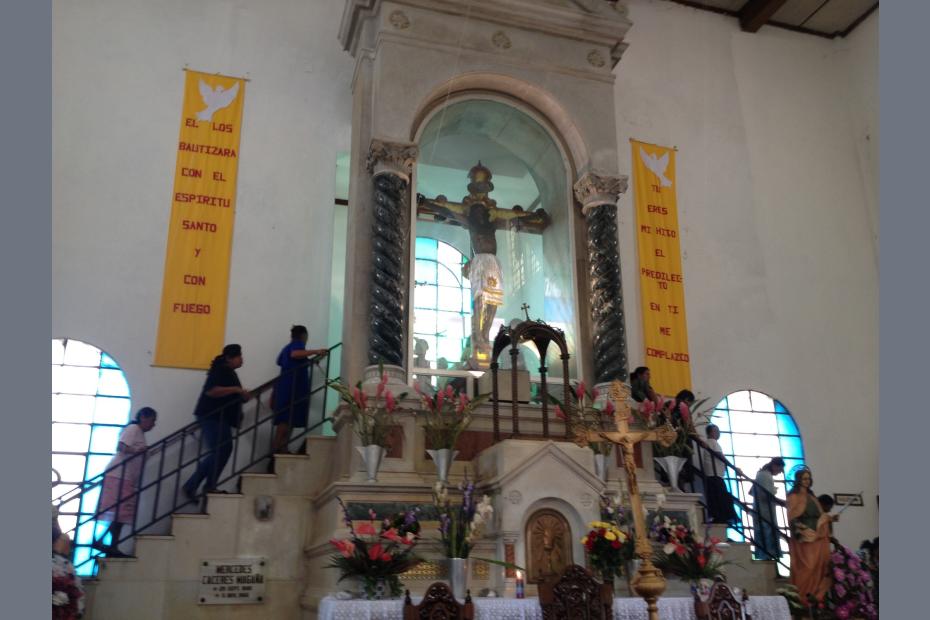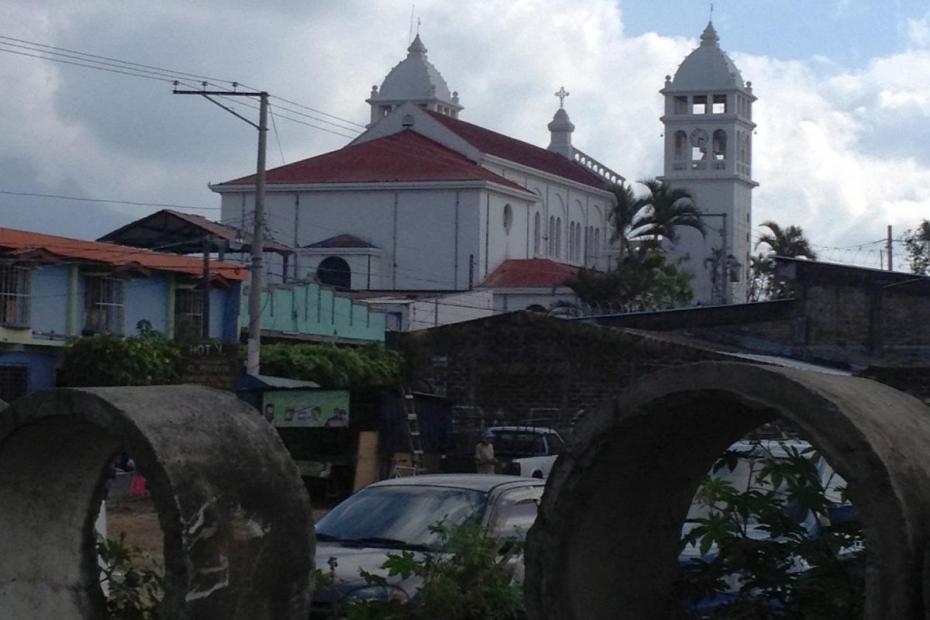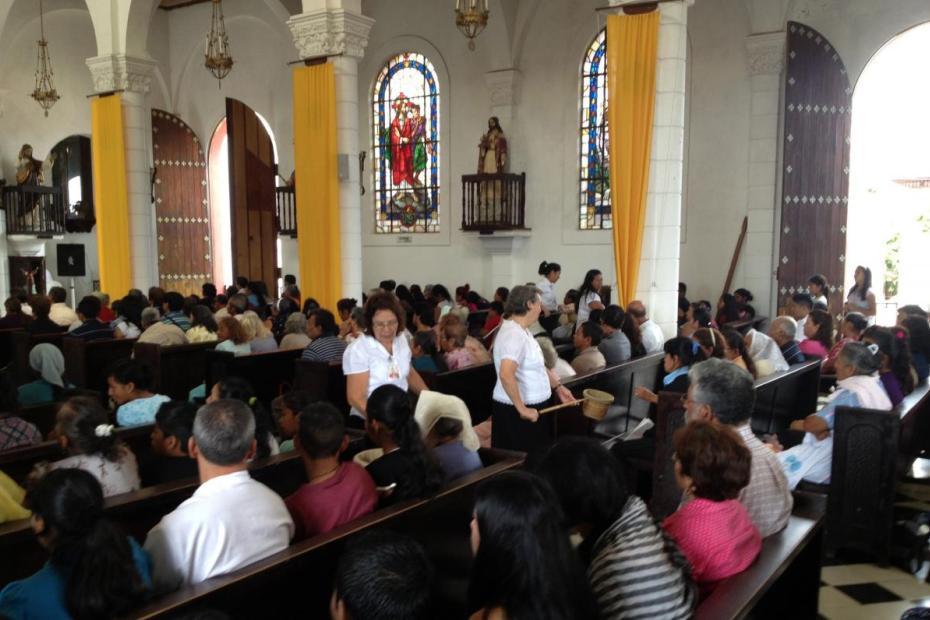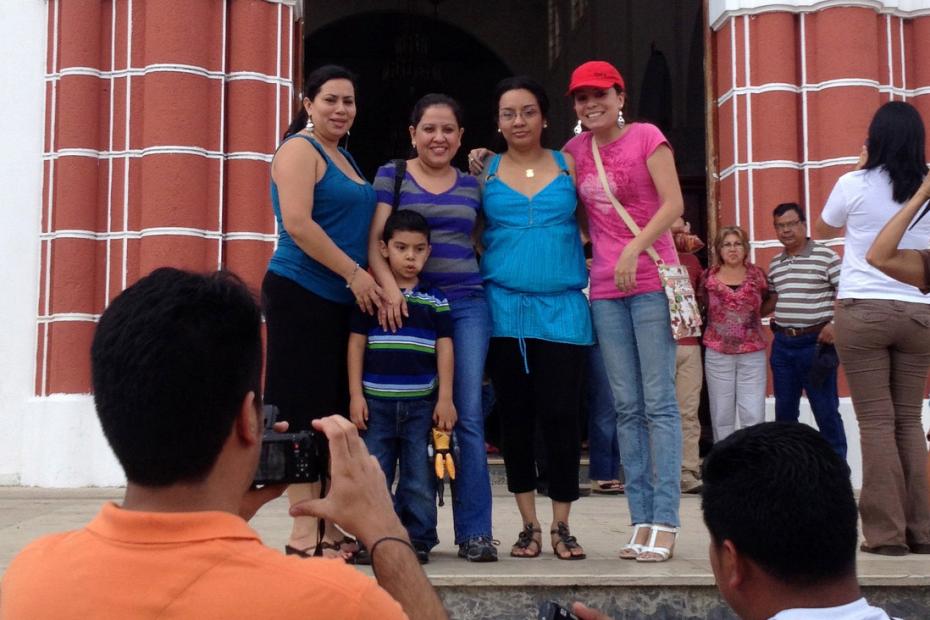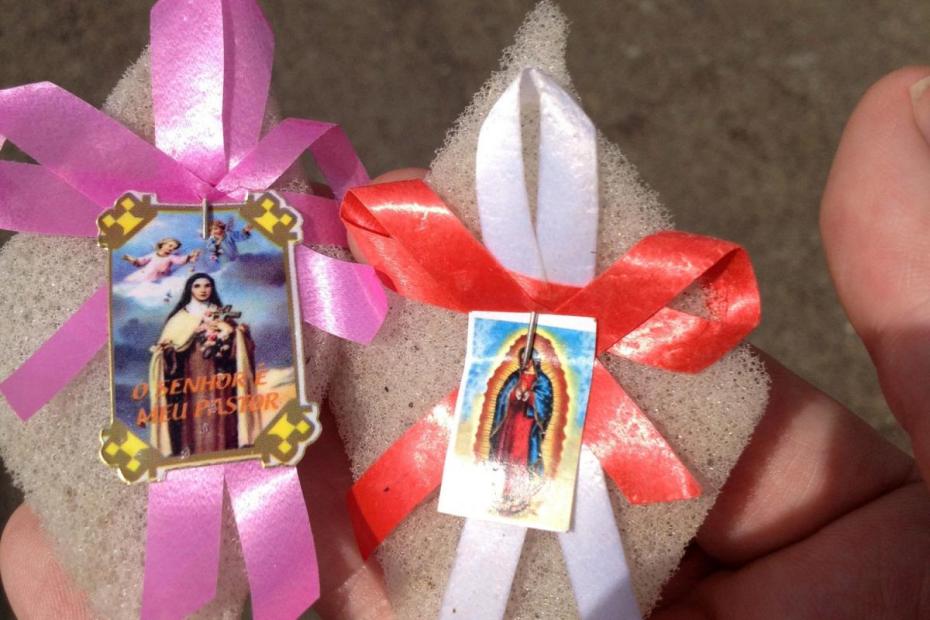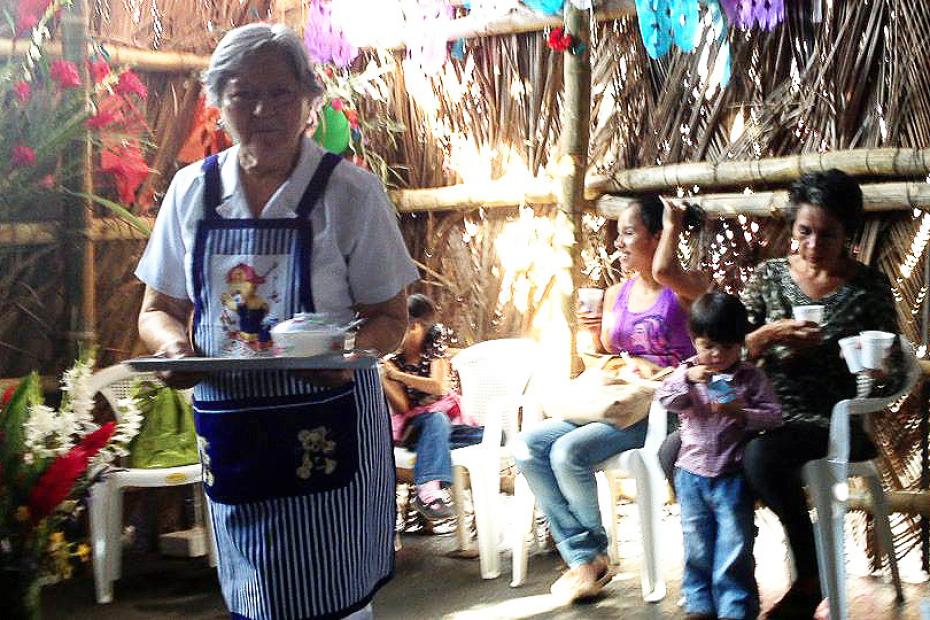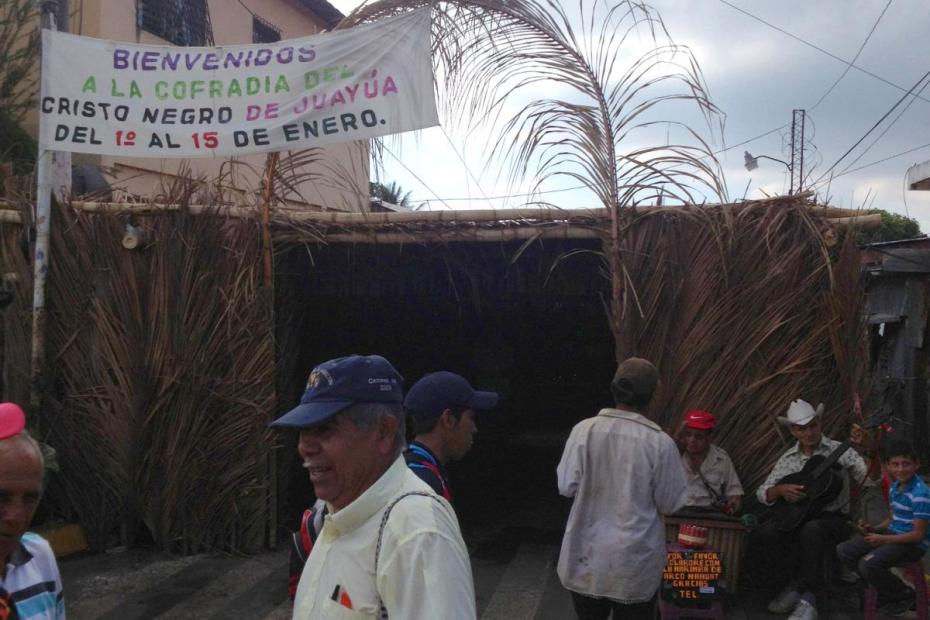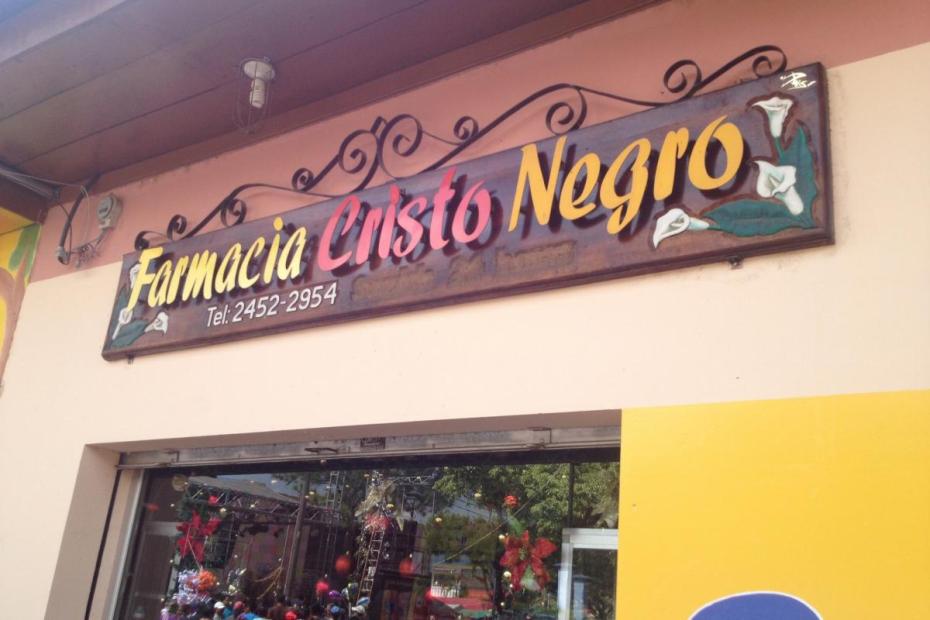The parish church of Santa Lucia in Juayúa, El Salvador is famous for a large colonial-era statue of the Cristo Negro, or Black Christ, which hangs behind the altar of the imposing church. Many people refer to the church not by its official name but as the Cristo Negro church. The blackness of the figure is especially interesting in a colonial context, and in a place where the indigenous people were smaller and brown, but where there were very few people of African origin.
The feast of Cristo Negro runs from January 8-15, and spills out from inside the church into the neighboring streets. The feast is one of 13 Cristo Negro feasts in El Salvador, all in the month of January.1
The feast has two manifestations – the seemingly more “official” parish events that begin inside the church and move into the streets, and another more “popular” cofradía (confraternity) event that takes place in a thatched hut in the street. The official/popular distinction is not entirely helpful, since the organization of both sites is interwoven and conducted within the parish.
Physical location partly defines the difference, but the events of the feast stretch geographically beyond both shrines. The city square is taken up with a food festival, processions, fireworks, and there is even a rodeo that locals describe as a part of the feast.
While both events are built around the same crucifix (one very large and one small), the church feast is grander, centered around an elaborate 1950s church built in a European style, with staircases leading to the cross in a style similar to some Spanish shrines. The “popular” feast is consciously indigenous in style, built on a small, waist-high altar.
The parish organizes many liturgical aspects of the feast, and the cofradía is responsible for its own events. But organization of the feast stretches out more broadly than that. City officials help organize it, and street vendors, tourists and pilgrims (almost all from El Salvador or Guatemala) bring it to life.
The cofradía shrine is a rectangular booth made of bamboo and thatch, about 30 feet long and 20 feet wide, built over the street near the front corner of the church. The style is typical of other regional cofradías. Mariachi musicians play outside at the entrance, competing with the music and singing by two inside the church.
A shrine with a smaller Cristo Negro crucifix is at the end of the shrine, surrounded by flowers and lights. Chairs line each side of the booth. Visitors might make a small offering in the cofradía’s offering boxes at the shrine, which is intended to support the costs of the shrine. Whether they make an offering or not, all visitors are offered a drink of coffee and cinnamon. Visitors to the shrine are not overtly pious. They may pause for a few minutes at the statue, and otherwise might sit by the side and converse. There might be a little dancing in the booth, but most people sit and visit.
- 1 See Marielba Hererra Reina, La Fiesta del Cristo Negro en Juayúa,El Salvador.
